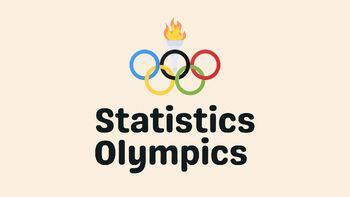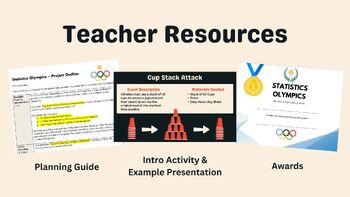Statistics Project - Statistics Olympics
- Zip
What educators are saying
Description
Engage your students in their study of statistics as they compete in self-created Olympic style events. This project will engage students and help them discover meaning and apply concepts including measures of central tendency, quartiles, outliers, variance, standard deviation, z-scores, box plots, histograms, normal and skewed distributions.
This project can be completed in approximately 6-8 days (50-min class periods)
** March 2023 Update **
Visual updates to all slides and documents
Rubric alignment with CCSS
Student slide template
Excel spreadsheet for digital results
Award certificates
Materials Included:
Project Planning - Teachers Guide (PDF and Word)
Introduction cup stacking activity (PowerPoint)
Cup stacking activity sheet (PDF and Word)
Project Instruction page and rubric (PDF and Word)
Data collection sheet (PDF, Word, Excel)
Finished example presentation (PowerPoint)
Award certificates (PDF)
PowerPoint and Word documents can be converted to Google Slides and Docs by uploading them to Google Drive.




